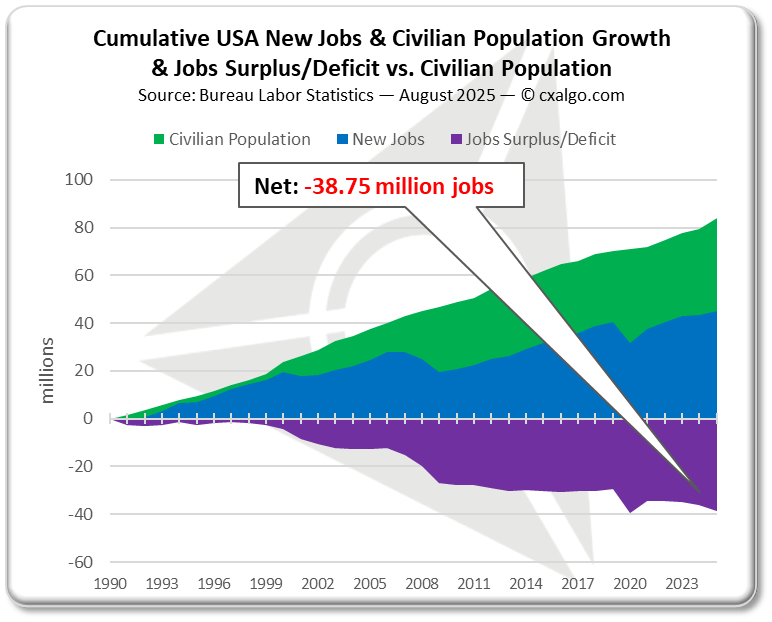Real Unemployment
The U.S. Unemployment Rate, as published by the Bureau of Labor Statistics, does not encompass the labor force participation rate in a historic context. Thus, the Real rate is derived from the average participation rate that the U.S. enjoyed prior to the housing crisis, a better barometer of economic recovery strength, with the difference between the published and real rates being a reflection of a shrinking labor force — and vice-versa, whenever that occurs. Furthermore, the REAL U-6 Unemployment Rate provides a better representation of the underlying labor conditions. (U-6 Total unemployed, plus all persons marginally attached to the labor force, plus total employed part time for economic reasons, as a percent of the civilian labor force plus all persons marginally attached to the labor force).
The monthly jobs report is often viewed from a micro perspective, and new jobs must be presented from a civilian population growth angle, cumulatively and on an annual basis. This chart provides the annual and cumulative macro condition of U.S. New Jobs Created & Civilian Population Growth, plus Jobs Surplus/Deficit vs. Civilian Population, providing the big picture that is often missing from financial reporting.
Employment Growth vs Civilian Population Growth is balanced at 0%, with a positive reading indicating a tight job market and economic expansion. A negative reading indicates a job shortfall and/or population expansion, and the needs are met by consumer credit and welfare expenditures financed through taxes and borrowing by the government against future tax revenue




